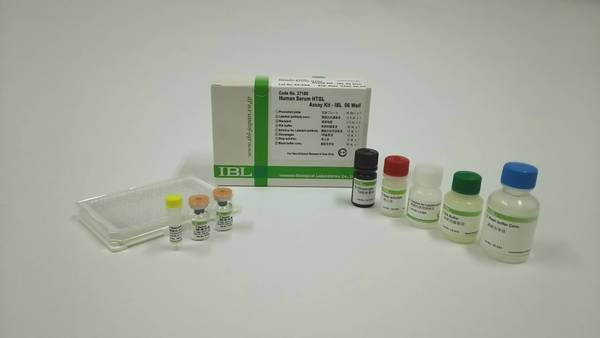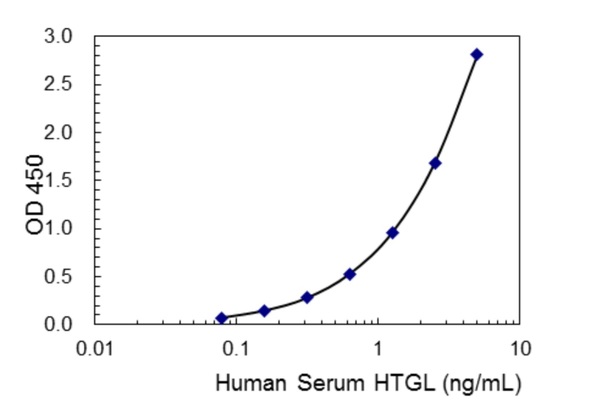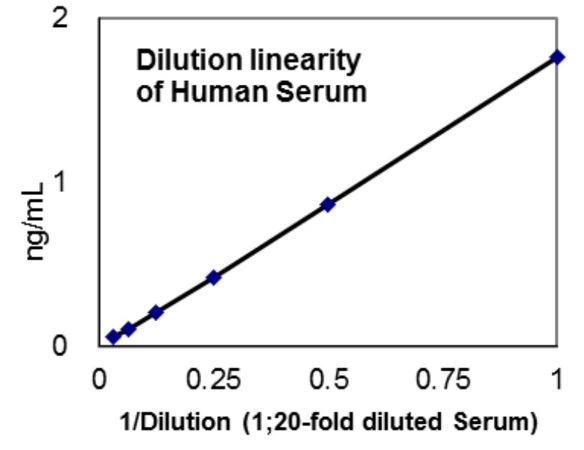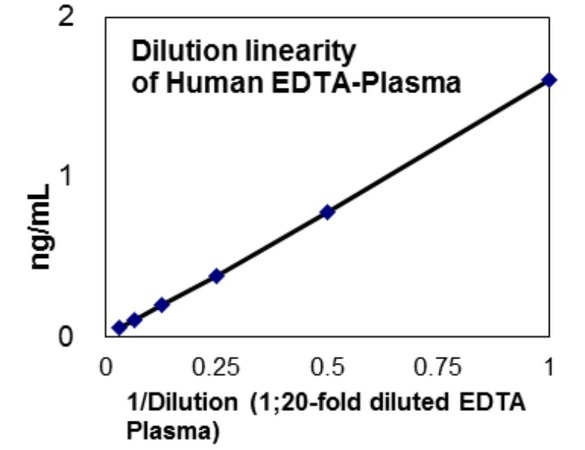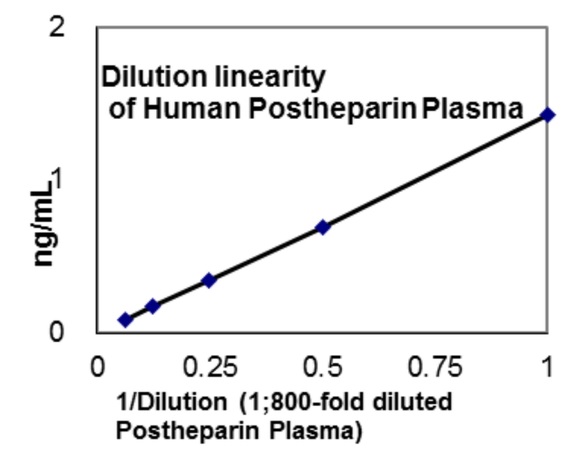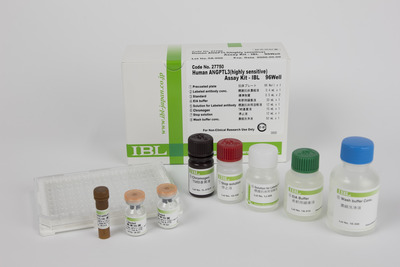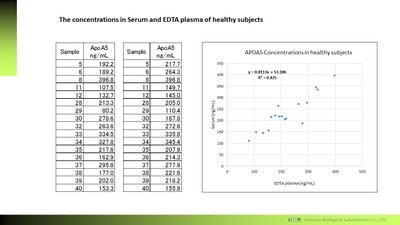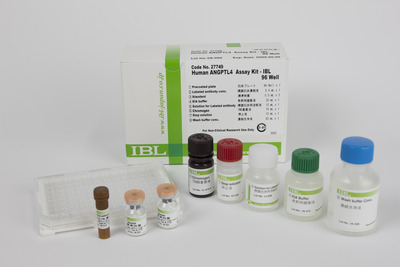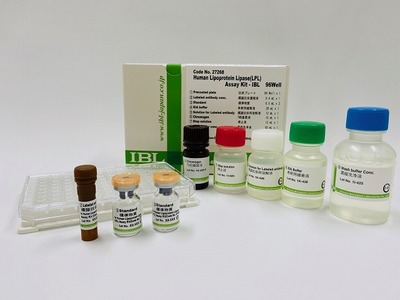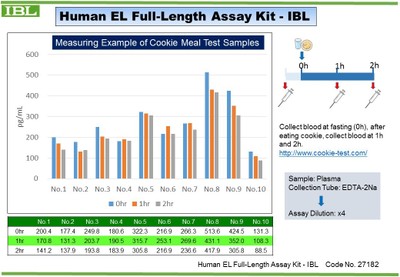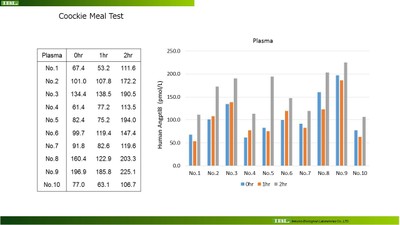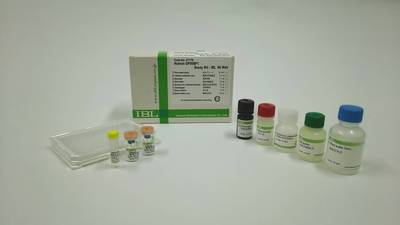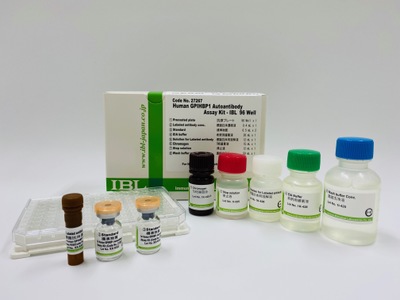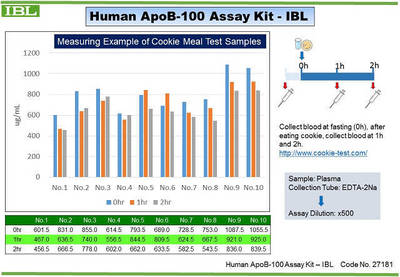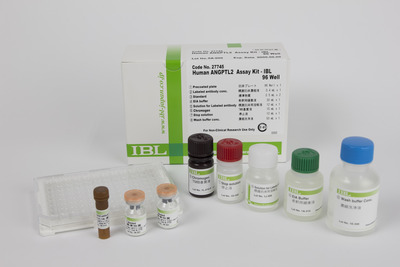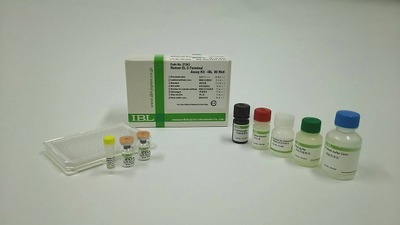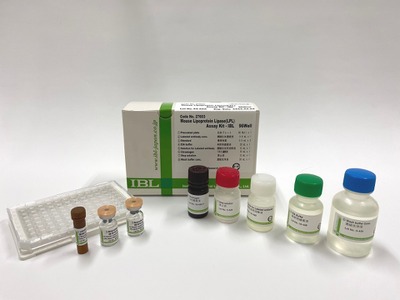- HOME >
- For Researchers >
- Product Search >
- Search Result >
- #27180 Human Serum HTGL Assay Kit - IBL
Product Search
#27180 Human Serum HTGL Assay Kit - IBL
- Intended Use:
- Research reagents
- Measuring Method:
- ELISA
- Sample Types:
- Human
- Measuring Samples:
- Serum, EDTA-plasma, EDTA-plasma (Postheparin)
- Measurement Range:
- 0.08 - 5 ng/mL
- Package Size1:
- 96 Well
※ The product indicated as "Research reagents" in the column Intended Use cannot be used
for diagnostic nor any medical purpose.
※ The datasheet listed on this page is sample only. Please refer to the datasheet
enclosed in the product purchased before use.
Product Overview
Product Overview
| Product Code | 27180 |
|---|---|
| Product Name | Human Serum HTGL Assay Kit - IBL |
| Maker Name | Immuno-Biological Laboratories Co., Ltd. |
| Intended Use | Research reagents |
| Measuring Method | ELISA |
| Conjugate | HRP |
| Species | Human |
| Measuring Samples | Serum, EDTA-plasma, EDTA-plasma (Postheparin) |
| Measurement Range | 0.08 - 5 ng/mL |
| Primary Reaction | Overnight at 2 - 8 ℃ |
| Secondary Reaction | 30 minutes at 2 - 8 ℃ |
| Sensitivity | 0.01 ng/mL |
| Specificity | Substance Cross Reactivity Human LPL ≦ 0.1 % Human EL ≦ 0.1 % |
| Storage Condition | 2 - 8 ℃ |
| Poisonous and Deleterious Substances | Not Applicable |
| Cartagena | Not Applicable |
| Measuring Service | Available |
| Package Size 1 | 96 Well |
Product Description
Product Description
HTGL (hepatic triacylglycerol lipase / hepatic triglyceride lipase) is a secreted glycoprotein and known as lipolytic enzyme and is also called as hepatic lipase (HL). HTGL has an important role in lipoprotein metabolism as a lipolytic enzyme that hydrolyzes triglycerides (TG) and phospholipids in chylomicron remnants, intermediate-density lipoproteins (IDL) and high-density lipoproteins (HDL). It has been reported that hypercholesterolemia or triglyceridemia is observed and β-very-low-density lipoproteins (VLDL), chylomicron remnants, IDL, TG-rich low-density lipoproteins (LDL) and HDL are accumulated in patients with deficiency of HTGL. HTGL is synthesized by hepatocytes and bound to heparin sulfate proteoglycans at the surface of liver sinusoidal capillaries. In general speaking, it is essential for use heparin plasma that is collected after intravenous injection of heparin (postheparin plasma) for measurement of HTGL in blood sample as same as lipoprotein lipase (LPL) as HTGL that bonds and adheres to surface of endothelial cells is removed from capillary vascular bed and released in blood stream soon after the heparin injection. This ELISA kit can detect HTGL in serum and plasma regardless with or without administration of heparin injection that is conventionally required for the measurement.
Keywords:
Lipase / Lipid Metabolism / Dyslipidemia
Keywords:
Lipase / Lipid Metabolism / Dyslipidemia
References
References
- Association between ANGPTL3, 4, and 8 and lipid and glucose metabolism markers in patients with diabetes. Harada M et al. PLoS One. 2021 Jul 22;16(7):e0255147.PMID: 34293055
- Konjac Glucomannan Attenuated Triglyceride Metabolism during Rice Gruel Tolerance Test. Nagasawa T et al. Nutrients. 2021 Jun 25;13(7):2191.PMID: 34202167
- Chylomicronemia from GPIHBP1 autoantibodies Kazuya Miyashita et al. J Lipid Res 2020 Sep 18;jlr.R120001116.PMID: 32948662
- Detailed analysis of lipolytic enzymes in a Japanese woman of familial lipoprotein lipase deficiency - Effects of pemafibrate treatment. Minamizuka T et al. Clin Chim Acta. 2020 Jul 17;510:216-219.PMID: 32682802
- Impact of serum levels of lipoprotein lipase, hepatic lipase, and endothelial lipase on the progression of coronary artery disease. Han H et al. J Interv Med. 2019 Jun 27;2(1):16-20.PMID: 34805864
- Association between skeletal muscle mass and serum concentrations of lipoprotein lipase, GPIHBP1, and hepatic triglyceride lipase in young Japanese men. Matsumoto R et al. Lipids Health Dis. 2019 Apr 4;18(1):84.PMID: 30947712
- GPIHBP1 autoantibody syndrome during interferon β1a treatment. Eguchi et al.J Clin Lipidol. 2019;13(1):62-69.PMID: 30514621
- GPIHBP1 autoantibodies in a patient with unexplained chylomicronemia. Hu X et al. J Clin Lipidol. Jul-Aug 2017;11(4):964-971.PMID: 28666713
- A new enzyme-linked immunosorbent assay system for human serum hepatic triglyceride lipase. Miyashita K et al. J Lipid Res. 2017 Jun 20. pii: jlr.M075432.PMID: 28634192
Note: Retrieve by PMID number in displayed by abstract: http://www.ncbi.nlm.nih.gov
FAQ
FAQ
-
 Q.Is composition of EIA buffer of each ELISA kit all same? Can it be mixed to use?
Q.Is composition of EIA buffer of each ELISA kit all same? Can it be mixed to use?
ELISA common FAQ -
 A.No it isn't. As constitute of each EIA buffer is different, it cannot be mixed with other lots or EIA buffers contained in other kind of ELISA kits.
A.No it isn't. As constitute of each EIA buffer is different, it cannot be mixed with other lots or EIA buffers contained in other kind of ELISA kits. -
 Q.What is the composition of concentrated wash buffer?
Q.What is the composition of concentrated wash buffer?
ELISA common FAQ -
 A.It contains ordinary Tween and phosphate buffer (0.05% Tween-20 in PB).
A.It contains ordinary Tween and phosphate buffer (0.05% Tween-20 in PB). -
 Q.What is the feature of the plate?
Q.What is the feature of the plate?
ELISA common FAQ -
 A.We use plate that is flat bottom and removable strip type plate (8wellx 12 strips).
A.We use plate that is flat bottom and removable strip type plate (8wellx 12 strips). -
 Q.Can I re-use standard after reconstitution?
Q.Can I re-use standard after reconstitution?
ELISA common FAQ -
 A.Not recommended to re-use standard after reconstitution. Please use it at once after the reconstitution.
A.Not recommended to re-use standard after reconstitution. Please use it at once after the reconstitution.
Please note that there are some exceptions. One time freeze-thaw the standard is acceptable for use after reconstitution for some ELISAs.
Please check the details on each product datasheet. -
 Q.What is different between reagent blank and test sample blank?
Q.What is different between reagent blank and test sample blank?
ELISA common FAQ -
 A.Reagent blank means a well is only added EIA buffer and the purpose is confirming whether the Test sample value is influenced by lack of washing process or other operations. Test sample blank means a well is added EIA buffer and HRP antibody and the purpose is to calculate the background.
A.Reagent blank means a well is only added EIA buffer and the purpose is confirming whether the Test sample value is influenced by lack of washing process or other operations. Test sample blank means a well is added EIA buffer and HRP antibody and the purpose is to calculate the background. -
 Q.How many samples can be measured by this kit?
Q.How many samples can be measured by this kit?
ELISA common FAQ -
 A.The pre-coated plate contained in our ELISA kit is 96 wells plate. We recommend to use 16 wells (2 slits) for standard and 80 wells (10 slits) for 40 samples in duplicate.
A.The pre-coated plate contained in our ELISA kit is 96 wells plate. We recommend to use 16 wells (2 slits) for standard and 80 wells (10 slits) for 40 samples in duplicate. -
 Q.What is LOD (Limit of Detection)?
Q.What is LOD (Limit of Detection)?
ELISA common FAQ -
 A.It (LOD) is defined as sensitivity that is calculated using the NCCSL method. Please refer to a datasheet of each product.
A.It (LOD) is defined as sensitivity that is calculated using the NCCSL method. Please refer to a datasheet of each product. -
 Q.What is LOQ (Limit of Quantification)?
Q.What is LOQ (Limit of Quantification)?
ELISA common FAQ -
 A.It (LOQ) is the lowest value of measurement (standard) range. Please refer to a datasheet of each product.
A.It (LOQ) is the lowest value of measurement (standard) range. Please refer to a datasheet of each product. -
 Q.What is the definition of Over Night (O/N) reaction?
Q.What is the definition of Over Night (O/N) reaction?
ELISA common FAQ -
 A.It means that the reaction is required more than 16 hours unless otherwise specifically defined it on a datasheet of each ELISA product.
A.It means that the reaction is required more than 16 hours unless otherwise specifically defined it on a datasheet of each ELISA product. -
 Q.What is the specification of quality control for ELISA product release?
Q.What is the specification of quality control for ELISA product release?
ELISA common FAQ -
 A.The information of specification is available on individual lot specific CoA. Please contact us with your reference lot number for obtaining of specific CoA.
A.The information of specification is available on individual lot specific CoA. Please contact us with your reference lot number for obtaining of specific CoA. -
 Q.What is the number (e.g. 432143214321) at the edge of strips of the plate?
Q.What is the number (e.g. 432143214321) at the edge of strips of the plate?
ELISA common FAQ -
 A.According to the plate maker (ThermoFisher), it does not have any specific meaning as it is just the number of molds.
A.According to the plate maker (ThermoFisher), it does not have any specific meaning as it is just the number of molds. -
 Q.How to wash an ELISA plate?
Q.How to wash an ELISA plate?
ELISA common FAQ -
 A.Washing it by an auto-washer is highly recommended.
A.Washing it by an auto-washer is highly recommended.
If it is not available, please refer to the demo video (only 2 mins) using a washing bottle. -
 Q.The wells turned black during the test with the kit.
Q.The wells turned black during the test with the kit.
ELISA common FAQ -
 A.It is possible that the wells were not washed sufficiently during the washing process after the HRP-labeled antibody reaction.
A.It is possible that the wells were not washed sufficiently during the washing process after the HRP-labeled antibody reaction.
Be sure to wash the wells enough times as described in the data sheet with washing buffer of more than 350 µL.

